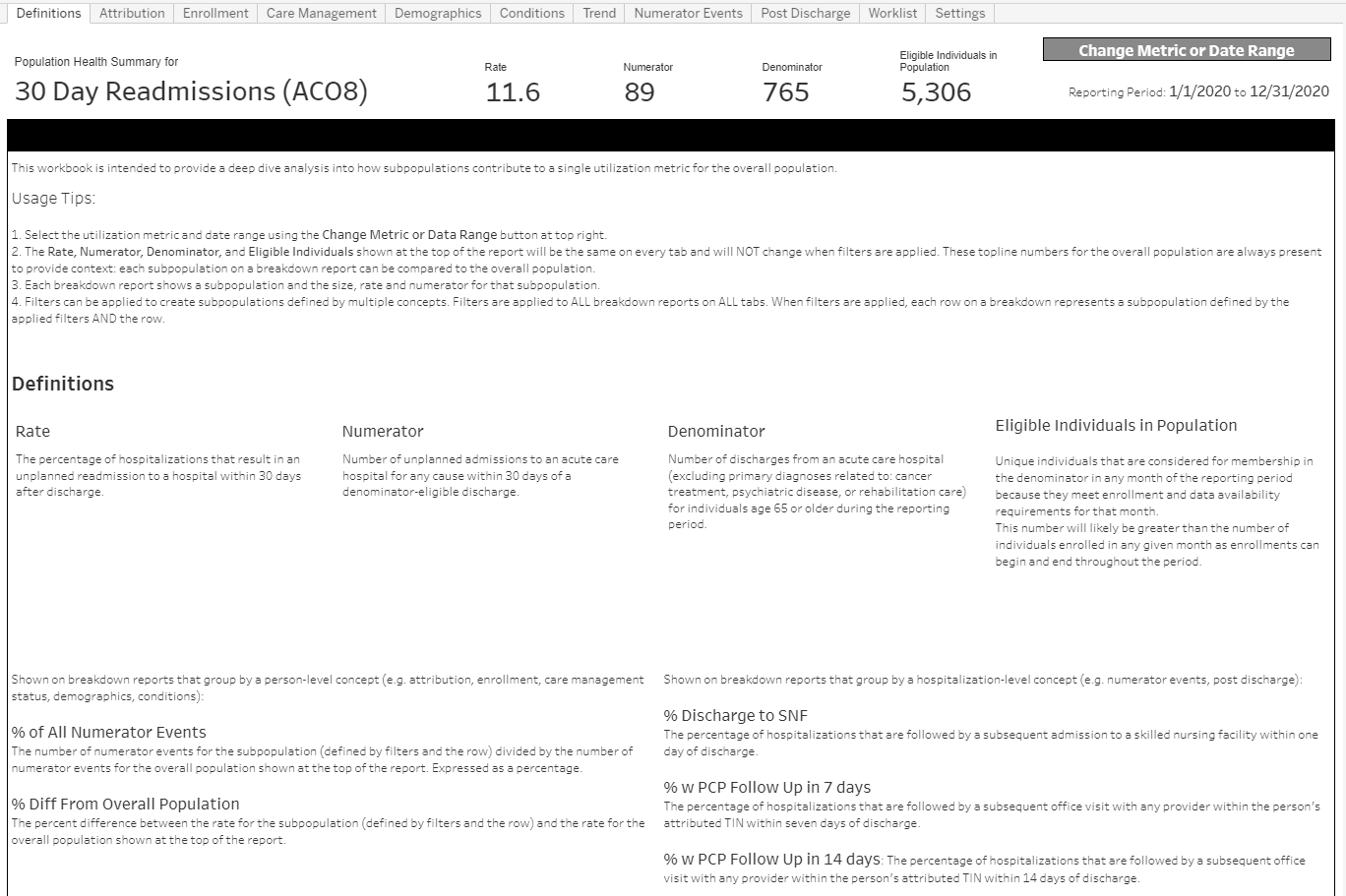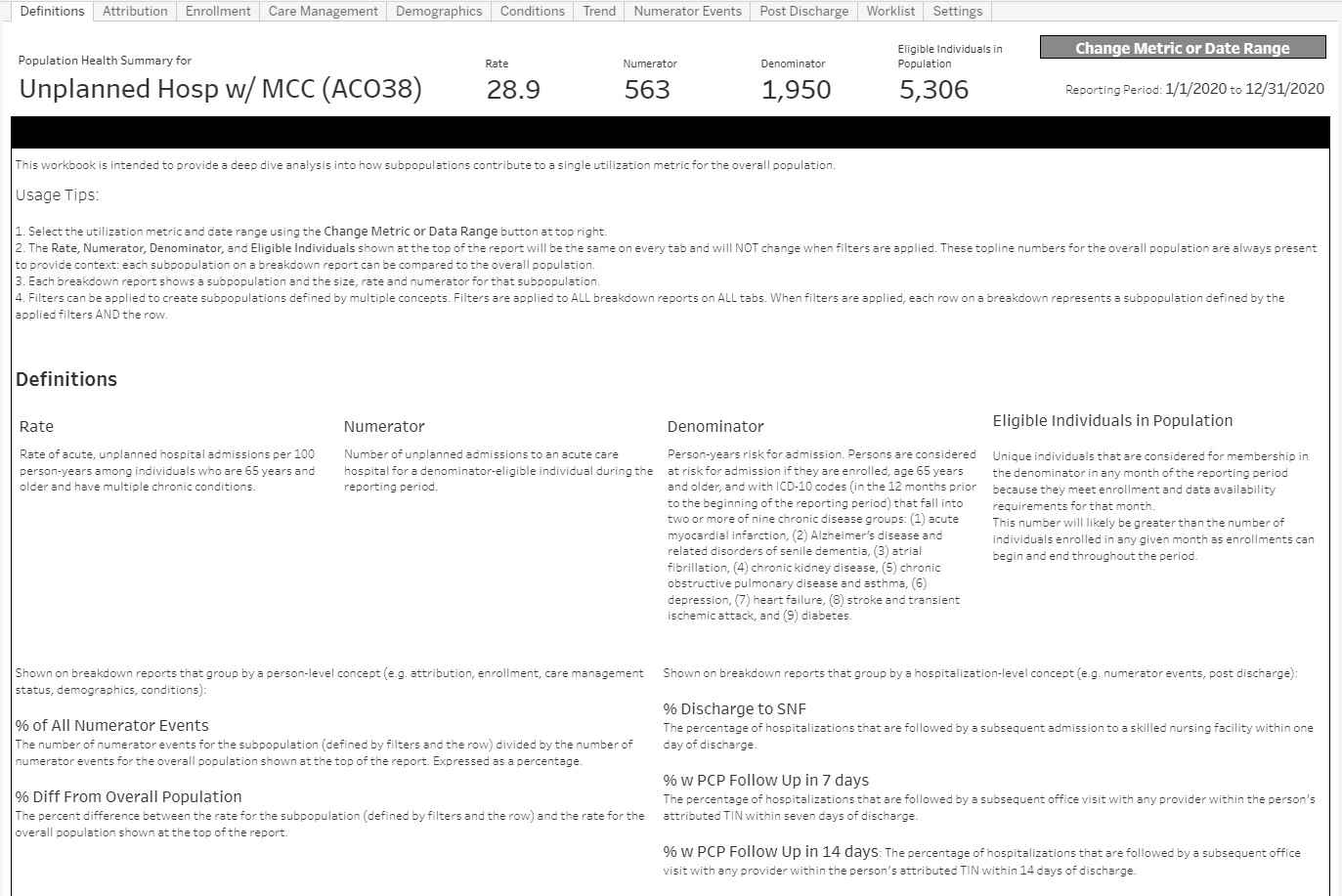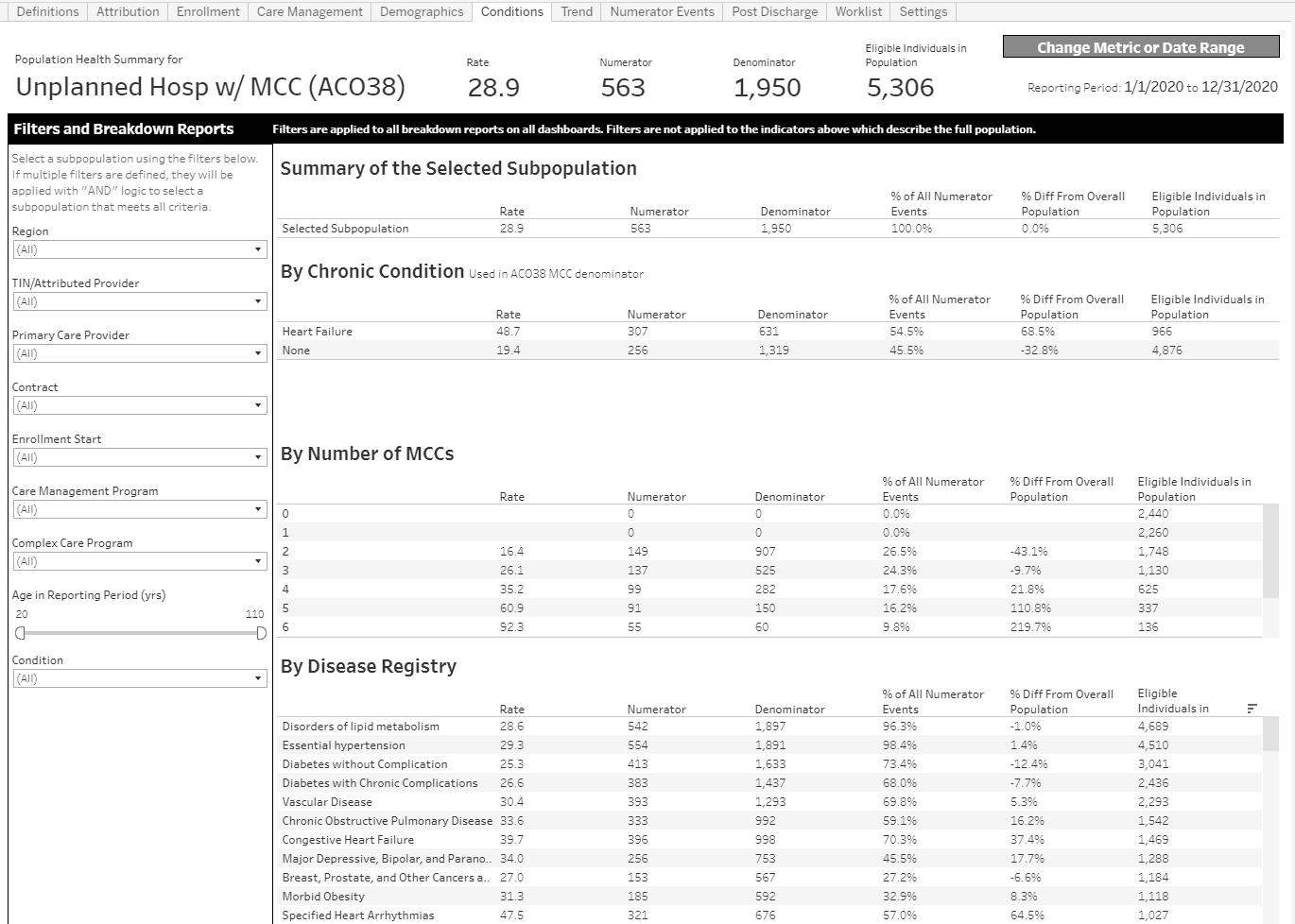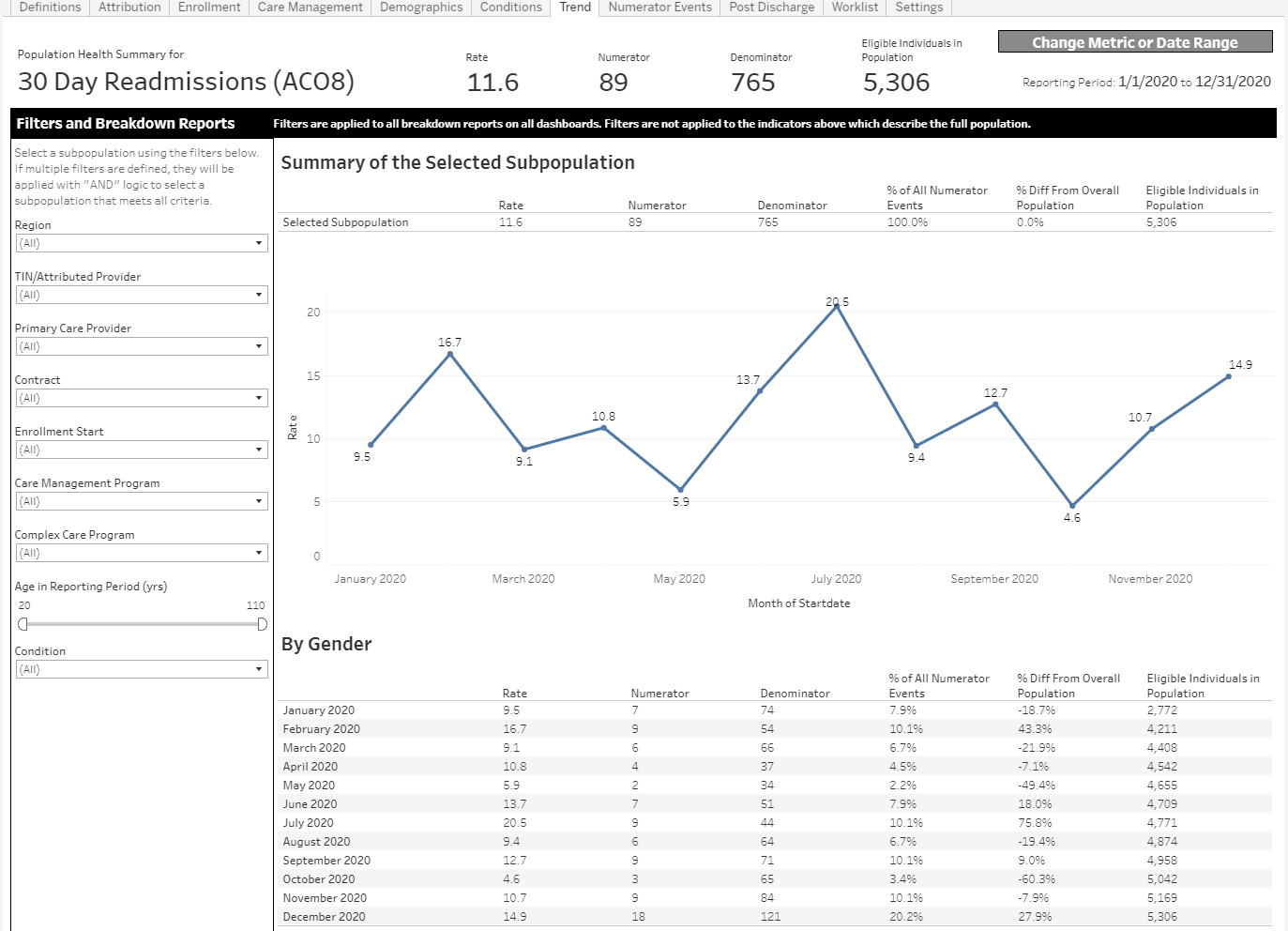Unplanned Hospitalization Analysis
What is driving unplanned hospital admissions and readmissions?
Unplanned hospitalizations are a major driver of costs and poor clinical outcomes. Subpopulations that are at high risk for unplanned hospitalizations can represent high priority target populations for care management. Further, understanding how these adverse acute events are distributed throughout the population can inform how to structure incentives and initiatives that seek to reduce this type of utilization.
The Bulk Data API presents enriched data that is computed to align with CMS utilization measures ACO8 (30 day readmissions) and ACO38 (unplanned hospitalizations for persons with multiple chronic conditions).
Key Questions of Interest
- What subpopulations (specified by features such as: TIN/attributed provider, enrollment, geography, demographics, chronic conditions, etc.) have a high rate of unplanned hospitalization or readmission?
- What combinations of these features are correlated with even higher risk for these adverse acute events?
- How are these adverse acute events trending over time and does the trend vary between subpopulation?
- How are unplanned hospitalizations distributed by facility, primary diagnosis, comorbidities, and discharge disposition (SNF, home, home w/ home health, etc.)?
- Which hospitals or attributed primary providers have higher or lower rates of post-discharge events such as: PCP follow up (within 7 or 14 days), home health, or SNF admission?
Bulk Data API Requirements
Dashboards that address these key questions can leverage the following tables within the Bulk Data API data model:
Example Visualizations (Tableau)
You can view and download this example report on analytics.careevolution.com: Unplanned Hospitalization Analysis
This Tableau workbook uses the following data source configuration:





